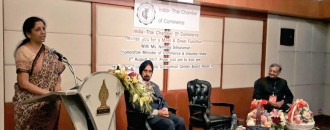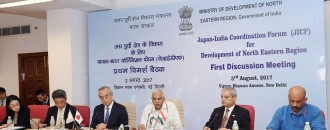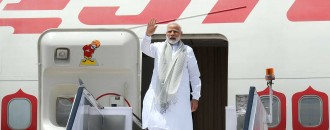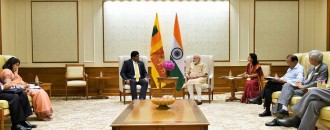
Myanmar and India’s bilateral trade has a larger untapped potential, Sitharaman
The Dollar Business Bureau
The 6th India – Myanmar Joint Trade Committee (JTC) Meeting co-chaired by the Commerce minister Nirmala Sitharaman and Dr. Than Myint, Union Commerce Minister from Myanmar was held on June 27, 2017 at New Delhi.
Myanmar is India’s gateway to South East Asia and ASEAN with which India is seeking greater economic integration through the ‘Act East’ Policy. The country shares a long land border of over 1600 kms with India as well as a maritime boundary in the Bay of Bengal.
India’s trade with Myanmar grew by 6.01% from $2.05 bn in 2015 -16 to $2.18 bn in 2016-17. The total export achieved in 2016-17 was $1.11 bn, reflecting an annual growth of 3.79% while the imports from that country was at $1.06 bn reflecting a growth of 8.43%.
Speaking to the media Sitharaman said that the bilateral trade potential between the two countries is yet to be tapped and sought cooperation of the Myanmar side in actively pursuing enhanced road, sea and air connectivity between the two countries. Highlighting the progress made by India in various key projects such as the India-Myanmar-Thailand highway and the components of the Kaladan Multimodal Transport Project, she sought the cooperation of the Myanmar side to expedite work from their side. She also highlighted the need for the Myanmar side to allow expeditious completion of the inland waterway works linking the Port of Sittwe to the Myanmar hinterland and hoped that the Myanmar side would come to an agreement over the negotiation of a Motor Vehicle Agreement which would facilitate seamless movement of cargo vehicles from either side.
India is also exploring the possibility of connecting Vizag or Chennai through direct shipping lines to the Sittwe port. An option to connect through air too was mooted.
Making a mention of the four Border Haats that India has with Bangladesh, the minister said since Dec 1, 2015 normal trade has been effective between both the countries, and was anticipating the finalisation of the Mode of Operation(MoO) for making the Border Haats between India and Myanmar functional. Both the countries have earmarked 10 points spread across 4 states viz., Arunachal Pradesh, Mizoram, Nagaland and Manipur, for operationalising Border Haats and simultaneously agreed to have 2 new Border Trade Points at Pangkhuwa and Zoninpuri.
MoUs in the areas of Health care and textiles are also being explored. The Indian side insisted in the the speedier expedition of the proposed MoU between RBI and Central Bank of Myanmar on currency exchange rate fixation along with the opening of a Counsellor Office in the North-East.
It should be recollected that Japan has agreed to invest over $610 million in the key infrastructural projects being undertaken in the Phase 1 of the North East Road Network Connectivity Improvement Project. Phase 1 will see the enhancement of National Highway 54 and National Highway 51 in Mizoram and Meghalaya. NH 54 will serve as a vital link to the connectivity of the Kaladan Multi-modal Transport Corridor. These projects will also complement the Indo-Pacific Economic Corridor.
India and Japan had signed a declaration in December 2015 seeking synergy between India’s Act East Policy and Japan’s “Partnership for Quality Infrastructure.” It was then that both the Prime Ministers, Abe and Modi agreed to create top class, durable infrastructure that would improve connectivity within India as well as outside.
This cooperation between India and Japan is to work jointly to enhance connectivity between Asia and Africa as well. The Asia-Africa Growth Corridor (AAGC) is an idea that seems to be materialising into an alternative to China’s OBOR.





 to success.
to success.